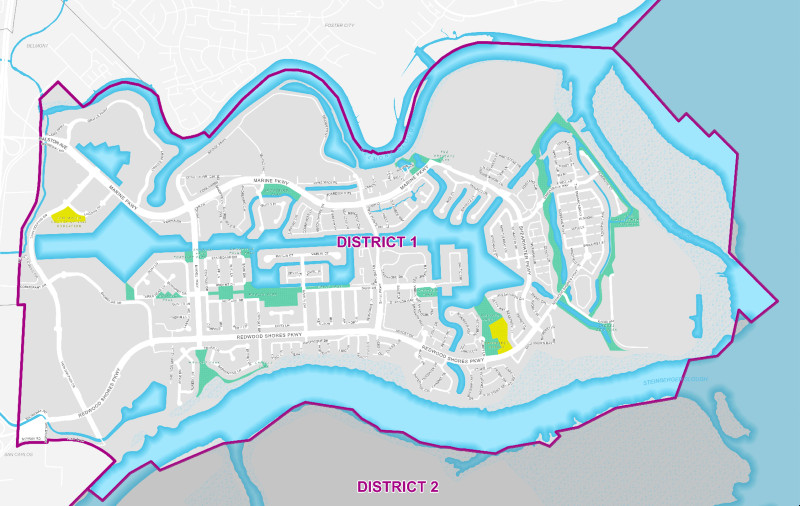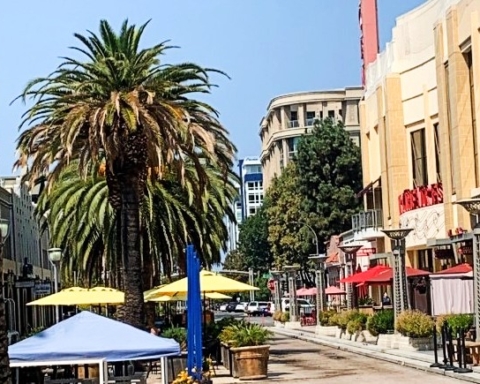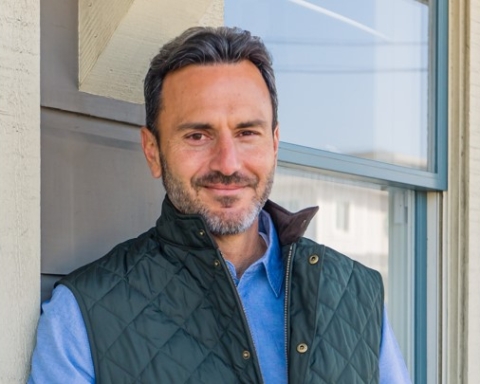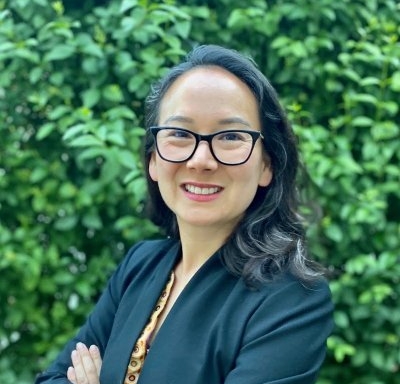The following is the second of four columns covering the November election for City Council of Redwood City. The second installment reports on the District 1 race. The previous installment, on the District 4 election, is here.
—
When the Redwood City Council last year drew up the new districts that would govern the 2020 election cycle, most attention was focused, understandably, on ensuring the creation of at least two minority-majority districts.
But there was an intense and successful effort, if lower profile, to ensure that the Redwood Shores area of the city would have its own district. That would mean a single councilmember devoted to a neighborhood that is closer to Belmont City Hall, and whose residents long have felt neglected and overlooked by the denizens of Redwood City Hall.
Now, there is a Shores district, and the first election there has drawn two of the city’s longest-serving public officials, but whose tenure in the Shores stands in marked contrast.
Jeff Gee has lived in Redwood Shores for 25 years, which includes nine years he served on the City Council. Nancy Radcliffe has lived in the Shores less than two years, having moved there upon her retirement, but she has served on the Planning Commission for 19 years.
Gee says his own longevity means “I understand our Redwood Shores neighborhood.” Radcliffe says she will bring “a fresh and honest voice” to representing the area. She said the use of the word “honest” carries with it no implications and just one of any number of words she could have chosen to characterize her candidacy.
The district encompasses the entirety of Redwood Shores, bounded at its southern edge by Redwood Shores Parkway. Half the district residents are White, and 39 percent are Asian-American, the highest concentration of any district by a factor of four. Residents also are the wealthiest in the city, with 45 percent reporting a household income of $75,000-$200,000 and 32 percent reporting a household income over $200,000.

Gee announced for re-election in 2018, but dropped out, a decision spurred, at least in part, by an activist group of residents who saw him as the embodiment of the changes to Redwood City they found objectionable. Now, with a district seemingly carved out for him, Gee acknowledges “There is a lot that has happened in two years.” Those things include district elections, campaign donation limits and a voluntary fundraising limit adopted by the council, he said.
“The biggest reason is that I didn’t know we were going to have the public health pandemic and that has really changed the dynamics of who we are as a community and where we’re headed,” Gee said.
Given her length of service on the Planning Commission, Radcliffe has been urged to run for the council on more than one occasion, most recently four years ago. “But we had a lot of great candidates,” she said. “Why dilute the votes for any one of those people who could have done a fabulous job?”
Now, after the city adopted term limits for its boards and commissions, Radcliffe will be leaving the Planning Commission, and “I want to stay involved in the city. The city has great bones and I want to keep making great choices.”
Regardless of the issues council candidates may raise, the council that is seated at the end of this year will have to deal with the economic fallout of the Covid-19 pandemic, which not only devastated local retail, commercial and development interests, but has left the city with a substantial budget shortfall due to losses in sales tax revenues.
“We have to be really careful with the Parks Department and the Library. Both of these serve everyone,” Radcliffe said. Filling the funding gaps that are likely to occur may require more foundations, similar to the non-profit organizations that support the library system. Those efforts also can do much to address the digital divide, an issue only made worse by the economic downturn. And she said the city has to be open to looking at city employee salaries, as the full scope of the economic downturn is understood.
Gee said he served on the council during the Great Recession of 2008-09 and that means “I know what it’s going to take to make the hard decisions. … We’re going to have to cut,” he said, and that will include “engaging our labor partners” who “were able to give back in ’08-09.” The adjustments include deferring compensation and leaving unfilled city staff vacancies. “They’ll have to share in the pain. … It’s not exclusive to Redwood City. This is going to hit everybody across the board. There is no way I can see we can tax our way out of the situation, or cut our way out of the situation.”
One budget area that might be the target of cuts is the Police Department, which is the object of a grassroots effort to redirect current funds to social services. Both Gee and Radcliffe said they were open to discussing such a change and relieving the police of responding to matters that might fall more directly to community service agencies, whether city-based or managed by San Mateo County.
Both said they were open to discussing other police reforms being proposed, including a citizens police oversight commission and greater transparency in the disclosure of complaints filed against individual officers for excessive use of force. Of a commission, Gee said, “It’s all in the details, so I don’t know what that means. Radcliffe said, “It seems reasonable, like a Peninsula Conflict Resolution type of organization and that feels very open and transparent to me and both sides could benefit from it. … It’s all in the implementation.”
As for the fundamental message of change embodied in the Black Lives Matter movement, Gee noted that he has been an active leader in the Asian-Pacific Islander (API) movement to expand the reach of those communities into government. The key is a city council that is “more inclusive” when filling city boards and commissions, which commonly are a starting point for future city council candidates. He noted Redwood City is a least 40 percent White and 12 percent API, but the boards and commissions are “over 70 percent white, and have been for years.” These bodies “need to look more like the people who live in Redwood City.”
The Black Lives Matter movement was an eye-opener for Radcliffe, who said, “I had thought we had come further in our understanding of each other, and it seems I was mistaken. … I guess I was naïve in thinking a lot of the civil unrest issues were in other parts of the country but, apparently, it’s not as good as I had hoped.” She added, “We’re all in this together and it’s really important to keep everyone safer and communicating.”
Whatever might be the issue of the day, however, development, growth and housing will be perennial issues facing any city council in any year.
The housing shortage is on the minds of every candidate running for council. “I’m not sure we’ve come up with an answer,” Radcliffe said. “While I’m pro-development, I’m also pro-neighborhood. We don’t live in a one-size-fits-all community.” She said the city needs a wide mixture of housing types covering a variety of income levels.
Gee said the city needs to be ready to build more housing “Where there is land available to do it, and we’re going to have to work really hard to find land that’s available. The pandemic has shone a bright light on the absolute need for more housing.” Gee said he is encouraged by efforts at the state level and private-sector interest in partnerships that are likely to make more funding available for housing and to speed up the process of approval and the cost of construction.
One primary site for a high-rise, high-density commercial and residential development is at Sequoia Station, located, quite literally, at the city’s crossroads of El Camino Real and Jefferson Avenue. An initial proposal raised the prospect of a 17-story building on the site.
“Seventeen stories makes all of us pause,” said Radcliffe, who lamented that the current site wasn’t built with greater density and height 30 years ago. “I don’t think Redwood City has the appetite for that height at this point. I’m definitely comfortable with the 8-story range, maybe 10. It’s absolutely the perfect location for transit-oriented development.”
As for greater levels height and density, Gee said, “I think we need to take a look at it. … It’s a great place to put jobs, housing and transit together and to be able to put that together in density.” He wants a community effort to develop a consensus for what should go at the site. “There’s room for a lot of ideas.”
Contact Mark Simon at mark.simon24@yahoo.com.
*The opinions expressed in this column are the author’s own and do not necessarily reflect the views of Climate Online.






